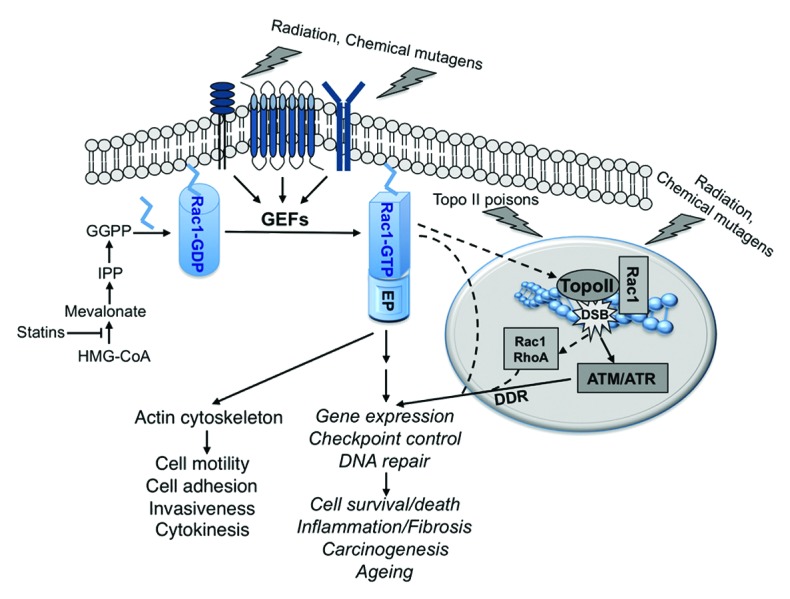
Figure 1.Model of Rac1-regulated response to genotoxic stress. Exposure to genotoxic agents rapidly stimulates membrane-bound receptors. In turn, guanine exchange factors (GEFs) for Rac1 become activated. GTP-bound active Rac1 couples to different effector proteins (EP), eventually leading to pleiotropic biological effects, which are either closely related to the actin cytoskeleton, or are independent of it. Genotoxins also damage DNA, thereby triggering the DNA damage response (DDR). Rac1-regulated mechanisms are required to provoke the DDR following treatment with topoisomerase II (topo II) poisons. Membrane-bound Rac1 might be involved in this process. Bearing in mind that Rac1 is present in the nucleus associated with topo II, it is also conceivable that a so-far-unknown nuclear function of Rac1 affects the DDR. We hypothesize that Rac1, together with RhoA, which was also found in the nucleus, ameliorates early cellular responses to genotoxins resulting from damage to membrane and nuclear structures. Yet, while transducing signals originating from both membrane structures and damaged DNA, Rac1 appears to differently influence early and delayed responses to genotoxins. Nevertheless, targeting of Rac1 signaling is suggested as a promising strategy to interfere with the complex stress responses that are evoked by DNA damaging anticancer drugs and chemical mutagens.
